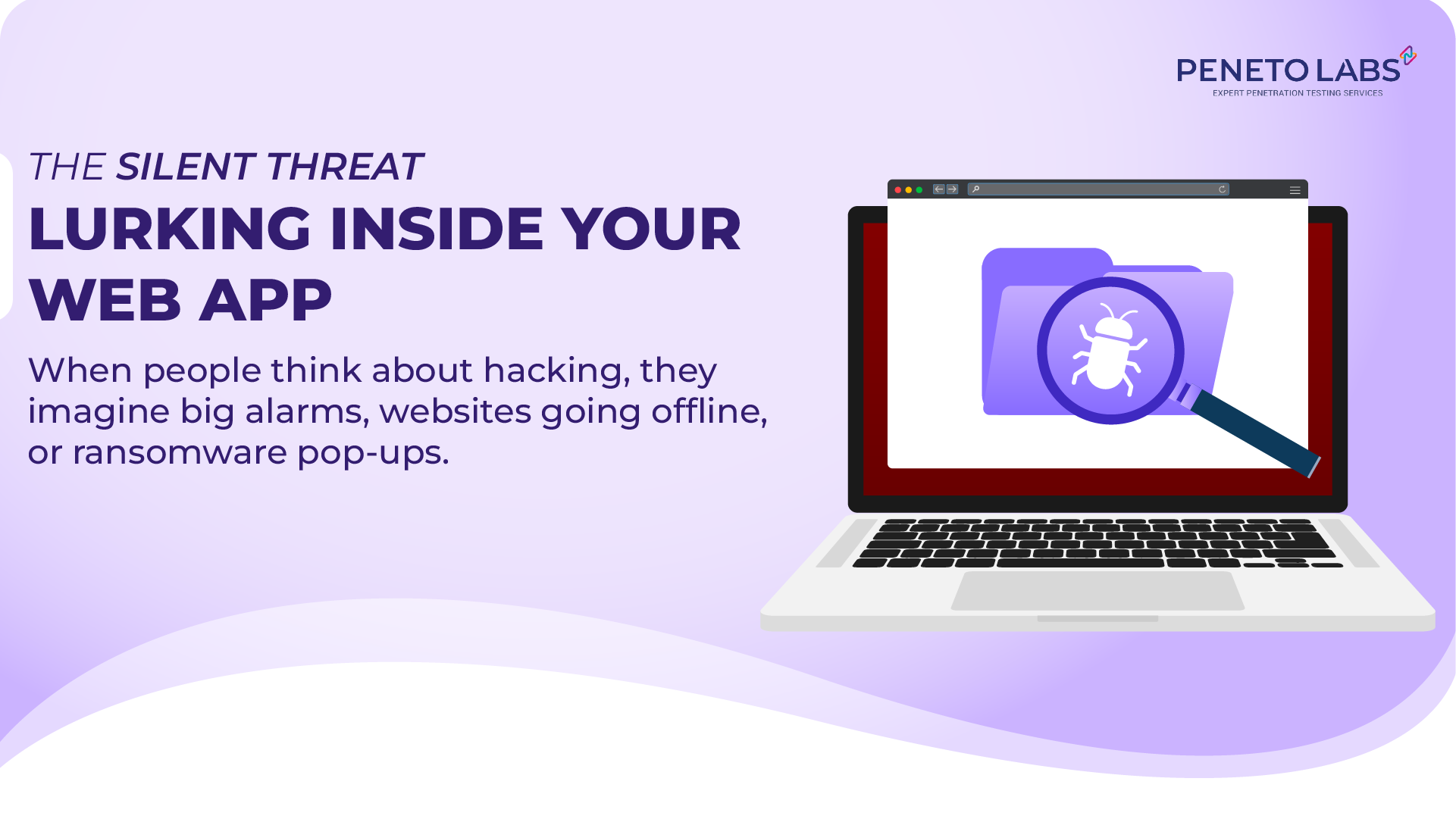When people think about hacking, they imagine big alarms, websites going offline, or ransomware pop-ups. But in reality, many web applications are compromised without anyone noticing.
These are silent threats—hidden vulnerabilities or backdoors that allow attackers to quietly gather data, hijack accounts, or plant malicious code.
By the time you detect them, the damage is often done. In this blog, we’ll uncover what these silent threats are, how they work, and the steps you can take to protect your business.
Why Web Apps Are a Prime Target for Hackers?
Web applications are the heart of today’s digital business. From SaaS platforms to e-commerce sites, they store sensitive data, handle transactions, and connect with multiple systems.
For attackers, this means one successful exploit could open access to thousands of records, financial data, or proprietary information.
The problem? Many vulnerabilities go unnoticed because they don’t cause obvious disruptions—at least not immediately.
Common Silent Threats Lurking Inside Your Web App
1. Insecure APIs
In order to communicate with databases, most modern apps use APIs to payment gateways, and external services. If your APIs lack authentication, rate limits, or proper encryption, attackers can bypass your front-end controls and directly target your data.
2. SQL Injection
An old but still effective technique. If your app doesn’t properly sanitise inputs, hackers can insert malicious SQL queries to read, modify, or delete sensitive data; without triggering alerts.
3. Cross-Site Scripting (XSS)
XSS flaws give hackers the ability to insert harmful scripts into your webpages. They can steal cookies, capture keystrokes, or redirect users—often without any visible changes to the site.
4. Misconfigured Cloud or Server Settings
A single misconfigured storage bucket, admin panel, or security group can expose critical data. This is one of the most common causes of large-scale breaches.
5. Weak Authentication & Session Management
No multi-factor authentication, predictable session IDs, or poor logout handling can lead to account takeovers—especially for admin users.
6. Outdated Frameworks and Plugins
Attackers regularly search for known flaws in out-of-date CMS frameworks, plugins, and libraries. You’re leaving the door open if you postpone updates.
7. Insufficient Access Controls
Not enforcing role-based access can allow regular users to access admin-level features or sensitive data.
8. Poor Error Handling
Detailed error messages that reveal system architecture, database names, or file paths can give hackers a roadmap for attacks.
9. Unsecured Third-Party Integrations
Plugins, analytics tools, and payment gateways can introduce vulnerabilities if not securely configured or vetted.
Signs Your Web app Might Already Be Compromised
Silent threats rarely announce themselves, but you can watch for:
- Unusual file modifications in critical directories
- Disabled security tools or alerts being turned off
- New admin accounts appearing without authorisation
- Logins from unusual geographic locations or at odd hours
- Drop in website performance even after scaling resources
- Sudden spikes in server load without increased user traffic
- Increase in error logs with unfamiliar patterns or parameters
- Small, unexplained code changes in your repositories or live site
- Outbound emails from your domain flagged as spam or phishing
- Browser warnings about unsafe or deceptive content on your site
- Suspicious API calls or high-frequency requests from a single source
- Unexpected outbound traffic from your servers to unknown IP addresses
- Complaints from users about strange account activity or password resets they didn’t request
- Data anomalies like missing records, altered values, or unauthorised exports
If you notice any combination of these signs, treat it as a red flag and start an immediate investigation.
Why Choose Peneto Labs for Web App Security?
Silent threats need sharp detection and skilled handling—and that’s where Peneto Labs excels.
We bring:
- Manual + Automated Testing for complete coverage
- Free Retesting within the audit window
- Safe-to-Host Certificate for launch readiness
- Compliance-Ready Reports aligned with ISO, PCI DSS, and RBI guidelines
- Direct Collaboration with your security and development teams
- Experts certified in GWAPT, OSCP, OSCE, and GCIH
- Proven experience across FinTech, SaaS, BFSI, and government projects
We don’t just find vulnerabilities—we help you fix them, strengthen your defences, and meet compliance with confidence.
Final Thoughts
The most dangerous threats to your web app are the ones you can’t see. They slip in quietly, stay hidden, and cause damage over time. A proactive security approach, regular pentesting, strong authentication, secure coding, and expert auditscan keep your app safe.
At Peneto Labs, we believe no company should suffer from cyberattacks. We provide the highest quality web application penetration testing.
Peneto Labs has been empanelled by CERT-In to conduct information security auditing services. If you want to make sure your application is truly secure and CERT-In compliant, you can talk to us today for a no-obligation consultation.
